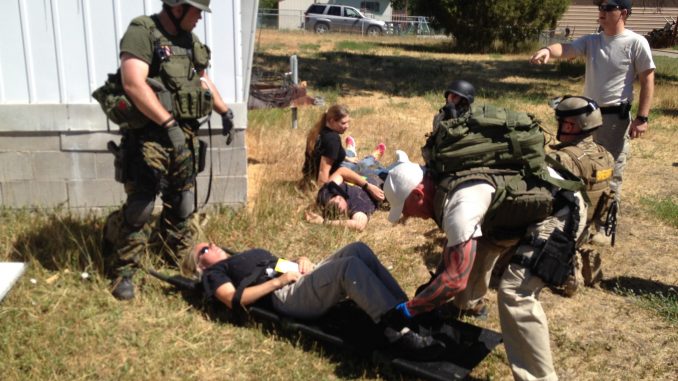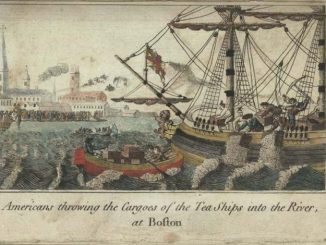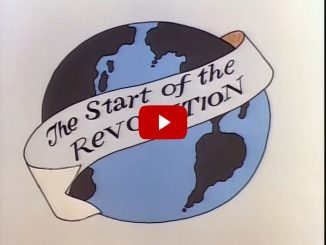
The EMS subspecialty of tactical medicine and the role of the tactical medic is not a new concept. Bringing medical intervention to the arena of battle predates Napoleon’s directive for having an ambulance near the front lines in the event he himself was wounded. The purpose of this article, however, is not to discuss clinical issues during a callout, but to examine some beneficial things that medics can do whether they are SWAT operators or not. Many tactically trained medics spend comparatively little time deployed on tactical operations. They have other talents and abilities that we can learn from and emulate for our benefit.
Preplanning
The best tactical medics tend to be superior planners and logisticians and possess the ability to begin with the end in mind. Taking part in a team activity or training means more than showing up with all your gear ready. Preplanning also means:
· Do you have enough water and ice, and where will you resupply?
· Are snacks needed, and do any members have special nutritional requirements?
· Are there environmental considerations such as shade, cover or terrain?
· What are the weather forecast, times of sunrise/sunset and moon stages?
· Are there indigenous plant or animal threats, and are any team members at particular risk due to allergy? (Do you have embers carrying EpiPens?)
· Is all contact, communication and response information about the activity printed in a known place and in a format that anyone on the team could read out loud into a telephone or radio if necessary?
· Do you possess appropriate information about each team member in regard to their medical background, family emergency contacts and religious preferences?
Some of this information may seem trivial or mundane, or like it should be the responsibility of someone else, like the team commander or executive officer. In some agencies it is, but these examples are just a few ways that the medic can be prepared for a variety of incidents ranging from minor to critical. Having sunblock to share with the teammate who forgot his prevents pain and suffering and lets him know you care and are paying attention. Having an extra pair of dry socks in a Ziploc bag or an extra pair of boot laces means a lot to the person who needs them.
Training With and For Your Team
The tactical medic has specific knowledge and talents that should be shared with all other members of the team. While many officers are first responders or EMTs, they are not likely to get the same practice and experience that the medic does. If the medic can gain 20-30 minutes during a training session, that time can be put to good use doing officer-down or “immediate-action” drills where the officers provide initial intervention by performing airway management or hemorrhage control. The
more realistic you make it and the more you are able to put relevant scenarios nto context, the better the learning opportunity will be and the more the team members will appreciate it.
Each member on the team should have, at a minimum, a pocket mask, an oral airway and a blood-stopper compression device like the Emergency Bandage. According to First Care Products, makers of the Emergency Bandage, we have learned many things from actual battle: 90% of the deaths occur in the prehospital phase, about half of the battlefield deaths are due to hemorrhage, and the majority of hemorrhages occur on the battlefield. We can reasonably compare these facts to threats in the civilian tactical environment and better prepare our officers to immediately help themselves and each other. The Emergency Bandage is an excellent example of a simple and cost-effective product that every team member should have; however, just like performing CPR or using a fire extinguisher, it is best if your first experience is not during the heat of battle. The answer:
team training led by the medic!
Other ideas for short training sessions might include: finding a carotid pulse without occluding the airway, using a pocket mask effectively, splinting a long bone fracture, placing an officer on an evacuation sleeve or litter while maintaining c-spine precautions, learning how to perform a quick physical assessment and report your findings over the radio, etc. Immediate-action
drills are more than yelling “officer down!” and dragging him to the front door where the medic takes over. Prepare and educate your officers to work with you and support you in the event you are not available immediately, there are multiple victims or you are the victim.
Community Outreach
I was recently told by a friend, who is the police chief of a small but rapidly growing community, that they did not have
funding to equip their patrol officers with rifles. He went before the city council to request money for equipment and was told that the budget could not support his request. However, when one of the council members connected the words “school shooting” with “unprepared police officers,” the tone of the meeting changed immediately. The council asked the chief,
“Are you telling us that your officers do not have the equipment they require to protect our children?” The chief replied honestly that they did not. Emergency funds were immediately located.
The ability to communicate is priceless. From the example above it is clear that knowing your job is not enough. You must understand your mission, know your limitations and continually assess needs in order to stay ahead of the curve. There are great benefits of providing show-and-tell sessions and discussing your roles and responsibilities with the public. A school shooting is an
all-too-familiar example that everyone can relate to.
How do you get “stuff” when you have no budget? One way is to learn how to seek grants. Another is to ask for help. Consider your mission before you choose a venue, and have a solid understanding of what you are asking for and why. Even if you have adequate funding, it is good to do things that promote a positive image of your agency. Service organizations like Kiwanis International, Lions Clubs International, the Rotary Club, or a Masonic lodge often entertain guest speakers or requests from the community. Many local and national churches sponsor community projects. Contact the store manager of your
local Wal-Mart, Kmart, Target, etc., for permission to set up a display table to offer free blood pressure checks or hand out coloring books to kids. You never know whom you’ll meet. If your political subdivision ever goes to the voters for a bond issue or a tax levy, your pre-established relationship will serve you well.
Where Do I Fit In?
I began this article by telling you that we were going to discuss other talents possessed by tactical medics. You will see that our discussion has not been as much about tactical medics as it has been about medics doing tactical things. I’m not trying to mislead anyone. If you are going to deploy with a SWAT team, you need specialized equipment, training and medical oversight. But why limit ourselves mentally or operationally by being an exclusive group when there is so much work to do and there are so many talented folks capable of pitching in and creating an inclusive team?
All of the examples we have discussed-developing relationships, preplanning, training, community outreach and interagency cooperation-are functions more than positions. You do not have to be a formally designated SWAT medic to do these things. You may not feel young enough, fit enough or personally suited to deploy with a tactical team on a callout. You don’t have to!
Todd Burke
is a 22-year veteran of the emergency services and director of the Tactical EMS School (www.tactical-specialties.com). He is manager for firearms training, less-lethal munitions and tactical medical programs for Strategos International www.strategosintl.com). He may be reached at todd@tactical-specialties.com.

[pt_view id=”517b65fj16″]





Be the first to comment